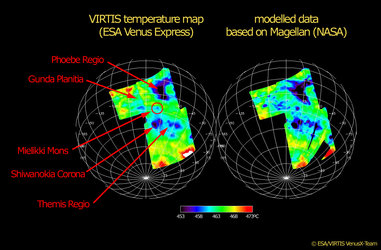Accept all cookies Accept only essential cookies See our Cookie Notice

About ESA
The European Space Agency (ESA) is Europe’s gateway to space. Its mission is to shape the development of Europe’s space capability and ensure that investment in space continues to deliver benefits to the citizens of Europe and the world.
Highlights
ESA - United space in Europe
This is ESA ESA facts Member States & Cooperating States Funding Director General Top management For Member State Delegations European vision European Space Policy ESA & EU Space Councils Responsibility & Sustainability Annual Report Calendar of meetings Corporate newsEstablishments & sites
ESA Headquarters ESA ESTEC ESA ESOC ESA ESRIN ESA EAC ESA ESAC Europe's Spaceport ESA ESEC ESA ECSAT Brussels Office Washington OfficeWorking with ESA
Business with ESA ESA Commercialisation Gateway Law at ESA Careers Cyber resilience at ESA IT at ESA Newsroom Partnerships Merchandising Licence Education Open Space Innovation Platform Integrity and Reporting Administrative Tribunal Health and SafetyMore about ESA
History ESA Historical Archives Exhibitions Publications Art & Culture ESA Merchandise Kids Diversity ESA Brand Centre ESA ChampionsSpace in Member States
Find out more about space activities in our 23 Member States, and understand how ESA works together with their national agencies, institutions and organisations.
Science & Exploration
Exploring our Solar System and unlocking the secrets of the Universe
Go to topicAstronauts
Missions
Juice Euclid Webb Solar Orbiter BepiColombo Gaia ExoMars Cheops Exoplanet missions More missionsActivities
International Space Station Orion service module Gateway Concordia Caves & Pangaea BenefitsLatest
Space Safety
Protecting life and infrastructure on Earth and in orbit
Go to topicAsteroids
Asteroids and Planetary Defence Asteroid danger explained Flyeye telescope: asteroid detection Hera mission: asteroid deflection Near-Earth Object Coordination CentreSpace junk
About space debris Space debris by the numbers Space Environment Report In space refuelling, refurbishing and removingSafety from space
Clean Space ecodesign Zero Debris Technologies Space for Earth Supporting Sustainable DevelopmentApplications
Using space to benefit citizens and meet future challenges on Earth
Go to topicObserving the Earth
Observing the Earth Future EO Copernicus Meteorology Space for our climate Satellite missionsCommercialisation
ESA Commercialisation Gateway Open Space Innovation Platform Business Incubation ESA Space SolutionsLatest
Enabling & Support
Making space accessible and developing the technologies for the future
Go to topicBuilding missions
Space Engineering and Technology Test centre Laboratories Concurrent Design Facility Preparing for the future Shaping the Future Discovery and Preparation Advanced Concepts TeamSpace transportation
Space Transportation Ariane Vega Space Rider Future space transportation Boost! Europe's Spaceport Launches from Europe's Spaceport from 2012Latest

Venus’ surface as seen by the VMC
Thank you for liking
You have already liked this page, you can only like it once!
This image is a false colour mosaic of the Venusian surface, composed from about 1000 individual Venus Monitoring Camera (VMC) images taken in April and August 2007. The pictures were taken in the infrared in the spectral window at the wavelength of 1 micrometre.
The mapped area covers Beta and Phoebe Regios in the mid- to equatorial latitudes.
Lowlands with higher surface temperature, and hence stronger thermal emission, are maked in orange. Highlands and mountains with elevations of up to 5 km above the Venusian ‘sea level’ are about 40°C colder and appear blue in the mosaic.
The vast orange-yellow region, Hinemoa Planitia, represents relatively young lowland terrain that cover about 70% of the Venus surface. It formed about 700 million years ago due to volcanic eruptions that covered almost the entire planet.
Devana Chasma, the elongated feature connecting Beta Regio and Phoebe Regio, is a rift zone, resembling East-African rift on Earth. Rifts are expected to be the centres of current volcanic activity on Venus.
In contrast to mapping of the planets with thin atmospheres like Moon and Mars, spatial resolution on the Venus surface is strongly degraded because of its thick atmosphere and clouds. This veil scatters radiation numerous times before it reaches the camera.
This is why observing Venus’ surface from orbit is similar to looking though a frosted window where one can see only the silhouette of the object. This atmospheric blurring limits spatial resolution of the surface images to about 50 km.
-
CREDIT
ESA/VMC/MPS/IPF-DLR -
LICENCE
ESA Standard Licence

Temperature maps of Venus’ surface

Clouds over Alpha Regio on Venus

Close-up on cloud structures on Venus

Cloud structures in Venus atmosphere















 Germany
Germany
 Austria
Austria
 Belgium
Belgium
 Denmark
Denmark
 Spain
Spain
 Estonia
Estonia
 Finland
Finland
 France
France
 Greece
Greece
 Hungary
Hungary
 Ireland
Ireland
 Italy
Italy
 Luxembourg
Luxembourg
 Norway
Norway
 The Netherlands
The Netherlands
 Poland
Poland
 Portugal
Portugal
 Czechia
Czechia
 Romania
Romania
 United Kingdom
United Kingdom
 Slovenia
Slovenia
 Sweden
Sweden
 Switzerland
Switzerland
























